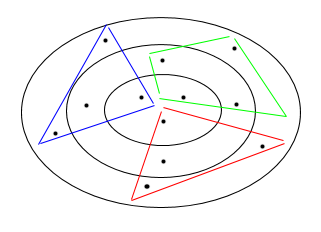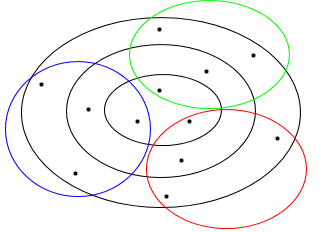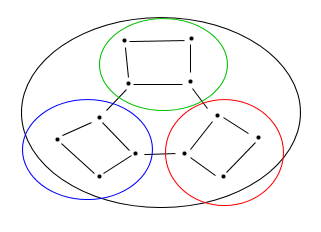Difference between revisions of "Outer Rim War III old"
(holding page for old ORW3 page stuff) |
m (damnit :P) |
||
| Line 1: | Line 1: | ||
| − | This page is merely a holding page that contains old information from the official [[Outer Rim | + | This page is merely a holding page that contains old information from the official [[Outer Rim War III]] page. |
'''''Note that the first four concepts have been reconciled into ''Concept 5'', in an attempt to reduce weaknesses of the various proposals.''''' | '''''Note that the first four concepts have been reconciled into ''Concept 5'', in an attempt to reduce weaknesses of the various proposals.''''' | ||
Revision as of 03:19, 17 January 2007
This page is merely a holding page that contains old information from the official Outer Rim War III page.
Note that the first four concepts have been reconciled into Concept 5, in an attempt to reduce weaknesses of the various proposals.
This version divides the sector into three sections — outer section, middle section, centre section — and distributes the worlds thusly: three in the centre section, four in the middle section, and five in the outer section.
Pros
Natural-looking configuration
Cons
Unbalanced distribution — two of the factions have the same distribution pattern (1 centre, 1 middle, 2 outer) while the other has a different pattern (1 centre, 2 middle, 1 outer). NOTE: It is not known if this is a real issue or not, unless we were to give different weighting or emphasis on the different sections, in which case it would be a true competition imbalance.
This version divides the sector into three sections as with Concept 1, however the distribution is symmetrical, with three systems in the centre section, three in the middle section, and six in the outer section.
Pros
Equally-balanced configuration with no natural advantages
Cons
Looks less natural than Concept 1
This version moves away from the sector divisions idea, and instead opts for a 'front lines' idea, where factions have to battle through defending systems on the front lines, which will fluctuate, rather than capturing worlds at random in the sector. Each faction begins with one world arrayed against one world of each of the two other factions.
Pros
Strategic systems, with front line worlds requiring capture before being able to access worlds deeper into a faction's territory
Cons
Does not look like a naturally-forming configuration
This version is a modification of Concept 3, and moves the starting cluster of faction systems from a diamond shape to a squared one. The main difference with this is that instead of each faction having one system being contested by both factions, it has each faction with one system arrayed against each faction, so instead of two factions battling over the one system, each of the front line systems per faction is only arrayed against one faction.
Pros
Same as Concept 3Features two front line systems: one against each faction
Cons
Same as Concept 3, insofar as it is not a natural-looking configuration
The number of worlds to be fought over can be one of two options:
3 only3–6
Option 1 usesone world per faction per round, with any incursive matches against each team being against the world denoted of that team for the battle (i.e. if Rebel challenges Imperial in battle, the Imperial player is fighting in defence of their world — this might make players more proactive, by encouraging them to pick fights rather than wait for themselves to be challenged by others)Option 2 allows the possibility of having up to two worlds per faction to be defended each battle, with enemy factions striking at different held worlds
Scoring
Players will be able to earn points simply by waiting for matches, which will hopefully serve the dual purpose of making waits tolerable and drawing more people, thereby lessening waiting time.
1 - 20 minutes on the waitlist [patrolling territory] [max 12 per day] [change to 15 minutes if competition is only one day per week]
This only applies when 50% or more of the number of participants are signed up (example: 1 person for 1v1, 2 for 2v2, etc.)
1 - connection failure (unable to connect or lag-out) [scouting territory; orders not to attack, or a brief skirmish]
After three lag-outs in one day, a person can no longer earn patrolling points that day, to prevent abuse.
2 - win by forfeit [enemy turns tail]
A forfeit may be called for any of the following reasons, if the other party so desires: No attempt to play the match by one of the participants within 15 minutes after the match is assigned; Departure mid-match for reasons other than connection problems.
- Bonuses:
2 - 25 points or higher in a week & mention in The Outer Rim Times5 - 50 points or higher in a week & paragraph or news flash in ORT10 - 100 points or higher in a week & at least half article in ORT
ORW Time options
Option B: Saturdays only, 2-week battle periods. Less intense. This has been the format for past ORWs.Option C: Sundays only, 2-week battle periods. May or may not be easier for most people to make than Saturdays.
Website stuff
Consider making highly customizable ladder/standings: ability to view particular game statistics, vs. particular club, vs. particular player, specific match times, vs. particular factions, 2v2 with particular teammate, etc. This will create a significant load on the MySQL server, but using static ladders may resolve such a problem.
We will be purchasing a domain name for this competition, such as orw3.net, when the name of the competition is finalized.



